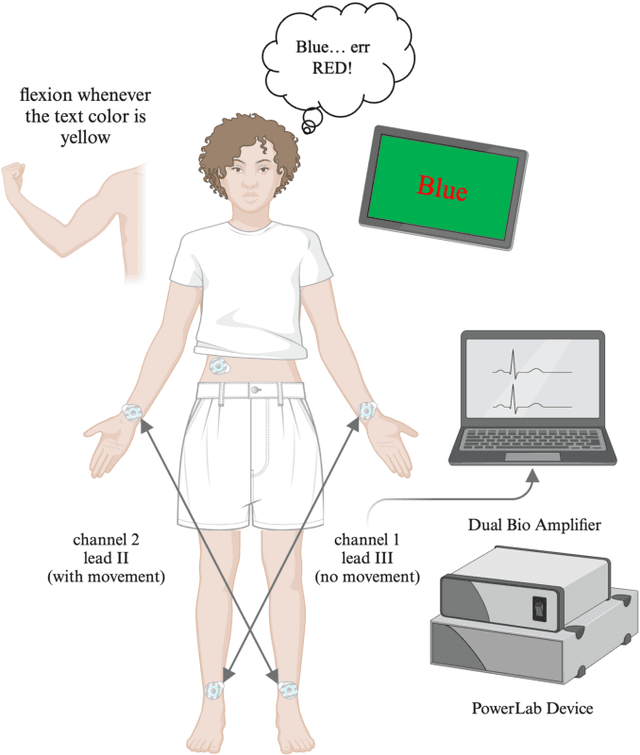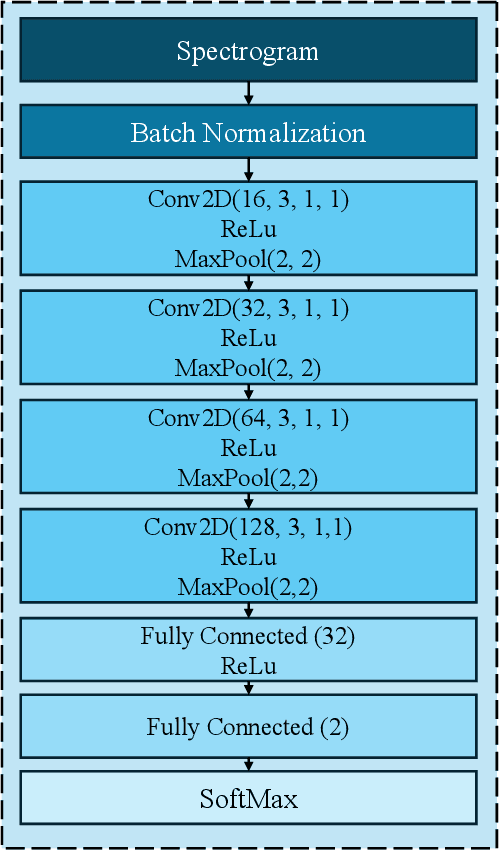Ki H. Chon
A Novel Approach to Characterize Dynamics of ECG-Derived Skin Nerve Activity via Time-Varying Spectral Analysis
Nov 13, 2024Abstract:Assessment of the sympathetic nervous system (SNS) is one of the major approaches for studying affective states. Skin nerve activity (SKNA) derived from high-frequency components of electrocardiogram (ECG) signals has been a promising surrogate for assessing the SNS. However, current SKNA analysis tools have shown high variability across study protocols and experiments. Hence, we propose a time-varying spectral approach based on SKNA to assess the SNS with higher sensitivity and reliability. We collected ECG signals at a sampling frequency of 10 KHz from sixteen subjects who underwent various SNS stimulations. Our spectral analysis revealed that frequency bands between 150 - 1,000 Hz showed significant increases in power during SNS stimulations. Using this information, we developed a time-varying index of sympathetic function measurement based on SKNA, termed, Time-Varying Skin Nerve Activity (TVSKNA). TVSKNA is calculated in three steps: time-frequency decomposition, reconstruction using selected frequency bands, and smoothing. TVSKNA indices exhibited generally higher Youden's J, balanced accuracy, and area under the receiver operating characteristic curve, indicating higher sensitivity. The coefficient of variance was lower with TVSKNA indices for most SNS tasks. TVSKNA can serve as a highly sensitive and reliable marker of quantitative assessment of sympathetic function, especially during emotion and stress.
Towards Continuous Skin Sympathetic Nerve Activity Monitoring: Removing Muscle Noise
Oct 26, 2024



Abstract:Continuous monitoring of non-invasive skin sympathetic nerve activity (SKNA) holds promise for understanding the sympathetic nervous system (SNS) dynamics in various physiological and pathological conditions. However, muscle noise artifacts present a challenge in accurate SKNA analysis, particularly in real-life scenarios. This study proposes a deep convolutional neural network (CNN) approach to detect and remove muscle noise from SKNA recordings obtained via ECG electrodes. Twelve healthy participants underwent controlled experimental protocols involving cognitive stress induction and voluntary muscle movements, while collecting SKNA data. Power spectral analysis revealed significant muscle noise interference within the SKNA frequency band (500-1000 Hz). A 2D CNN model was trained on the spectrograms of the data segments to classify them into baseline, stress-induced SKNA, and muscle noise-contaminated periods, achieving an average accuracy of 89.85% across all subjects. Our findings underscore the importance of addressing muscle noise for accurate SKNA monitoring, advancing towards wearable SKNA sensors for real-world applications.
Multiclass Arrhythmia Classification using Smartwatch Photoplethysmography Signals Collected in Real-life Settings
Sep 10, 2024Abstract:Most deep learning models of multiclass arrhythmia classification are tested on fingertip photoplethysmographic (PPG) data, which has higher signal-to-noise ratios compared to smartwatch-derived PPG, and the best reported sensitivity value for premature atrial/ventricular contraction (PAC/PVC) detection is only 75%. To improve upon PAC/PVC detection sensitivity while maintaining high AF detection, we use multi-modal data which incorporates 1D PPG, accelerometers, and heart rate data as the inputs to a computationally efficient 1D bi-directional Gated Recurrent Unit (1D-Bi-GRU) model to detect three arrhythmia classes. We used motion-artifact prone smartwatch PPG data from the NIH-funded Pulsewatch clinical trial. Our multimodal model tested on 72 subjects achieved an unprecedented 83% sensitivity for PAC/PVC detection while maintaining a high accuracy of 97.31% for AF detection. These results outperformed the best state-of-the-art model by 20.81% for PAC/PVC and 2.55% for AF detection even while our model was computationally more efficient (14 times lighter and 2.7 faster).
 Add to Chrome
Add to Chrome Add to Firefox
Add to Firefox Add to Edge
Add to Edge